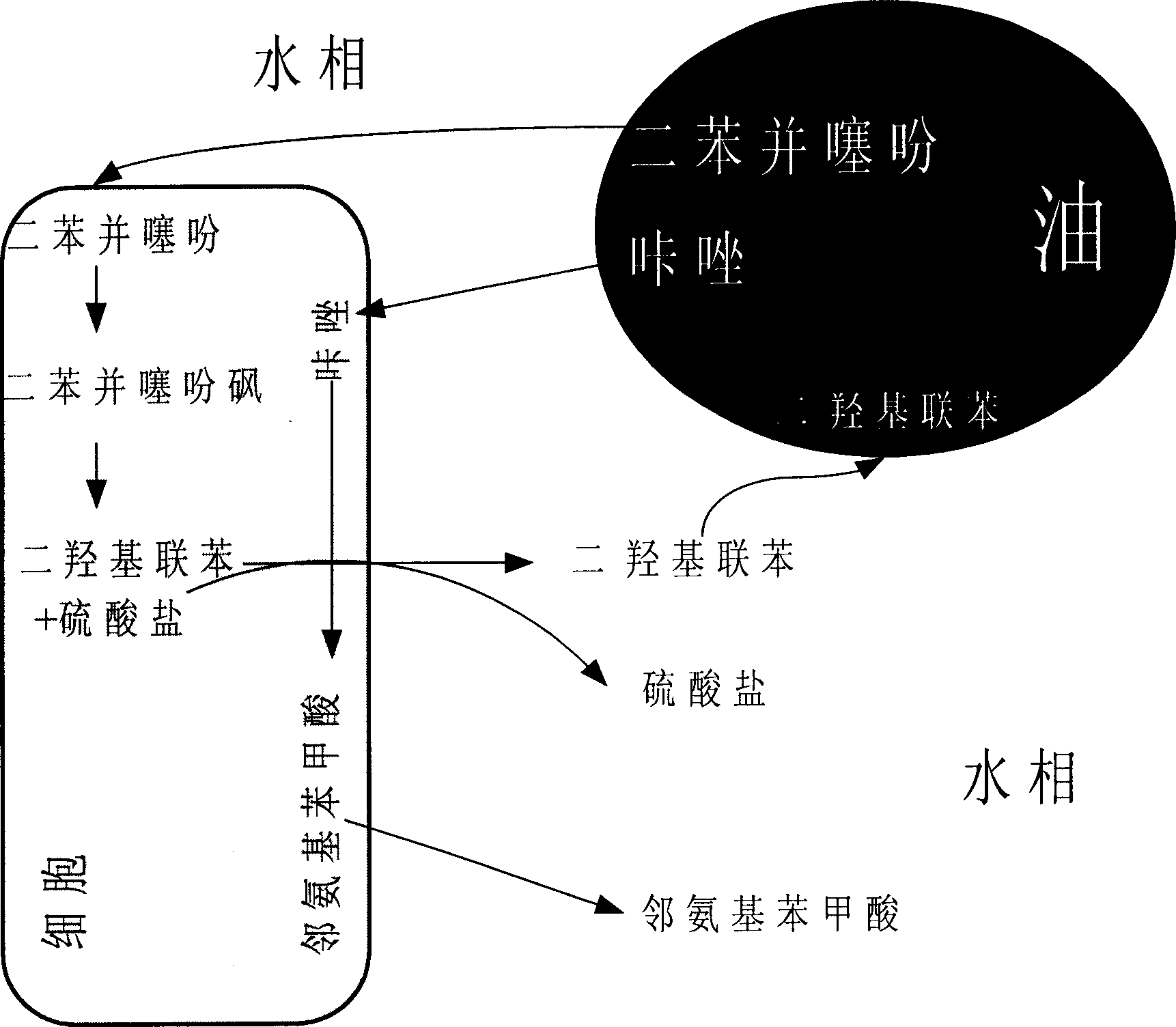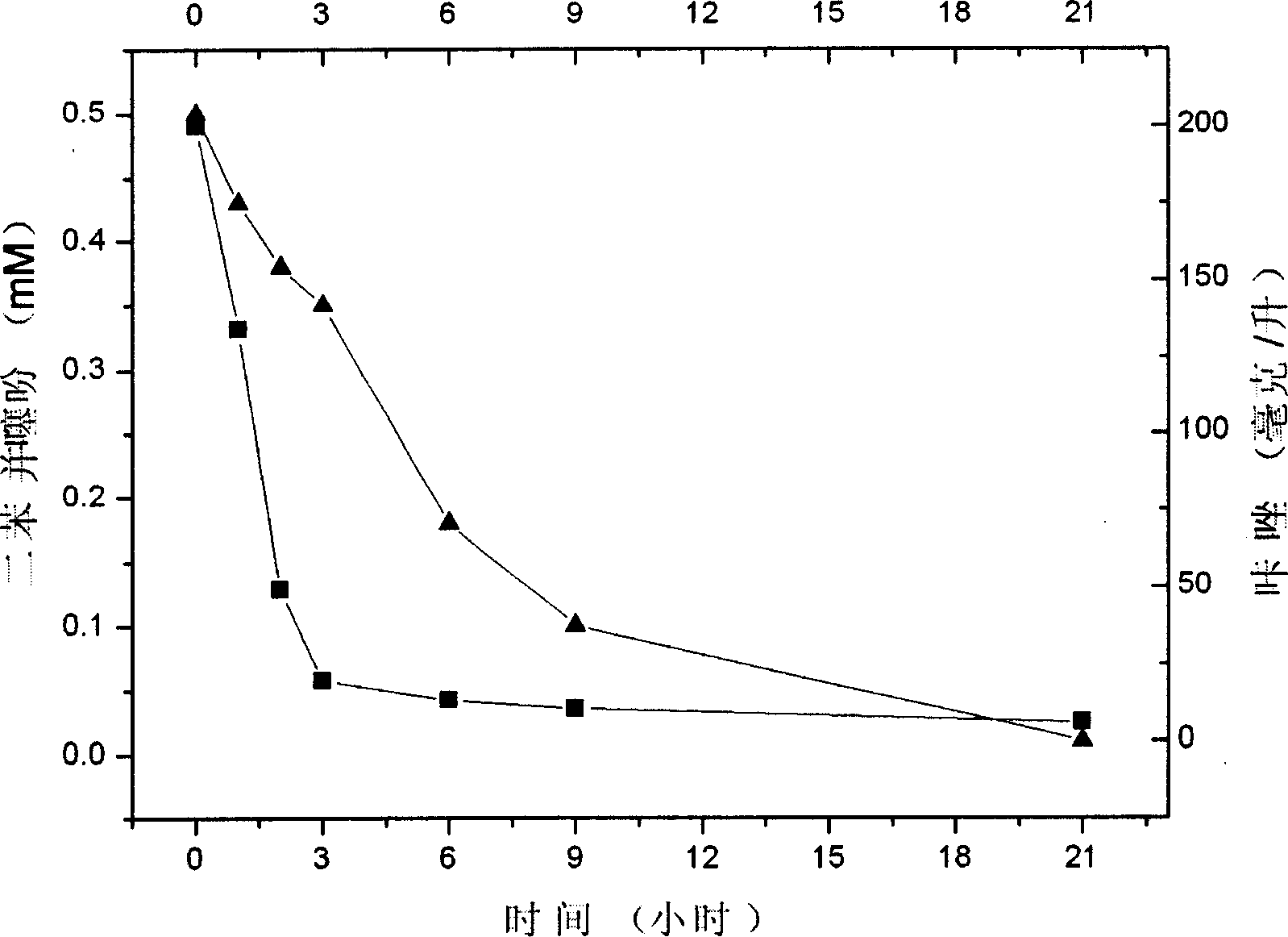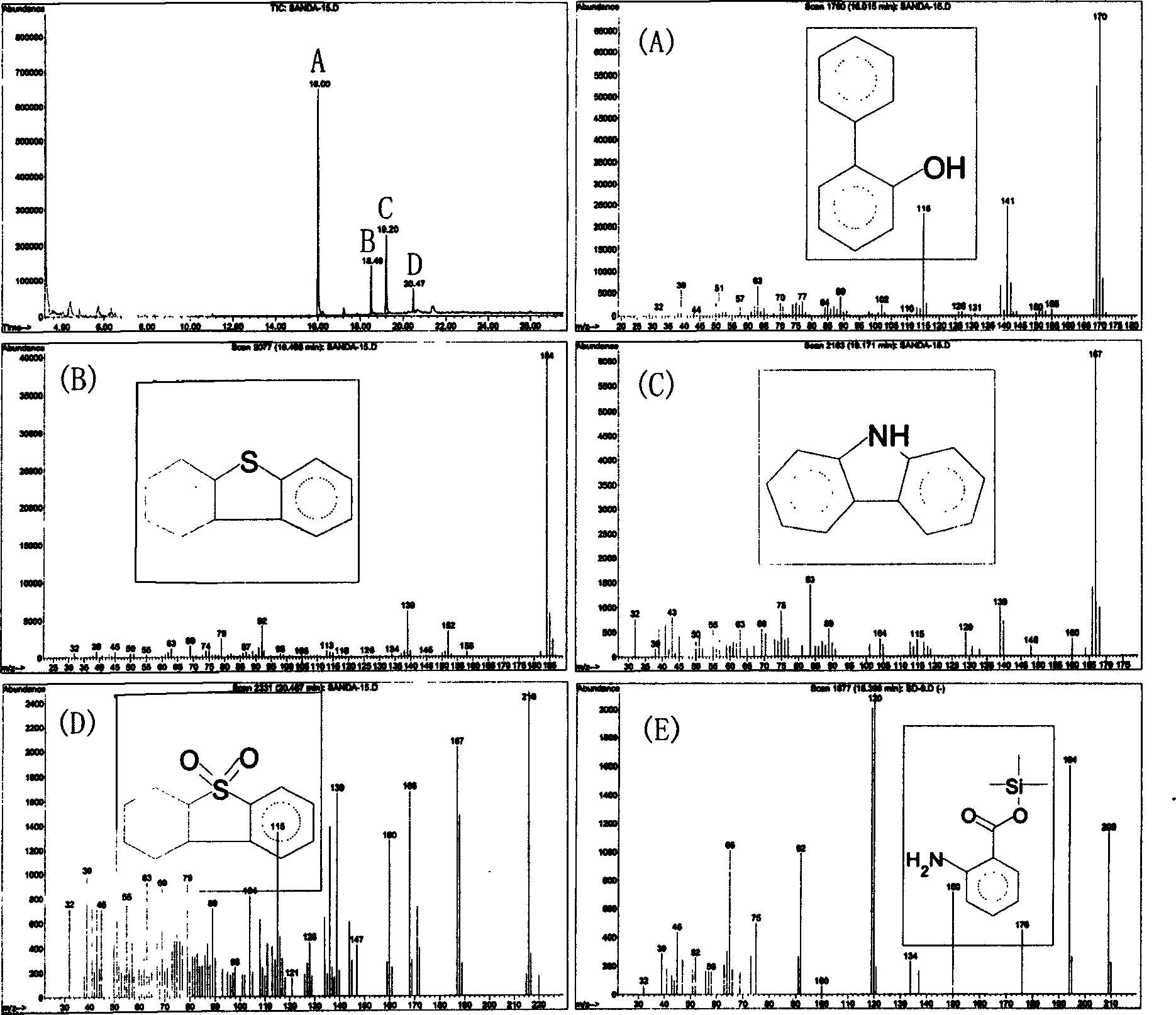One strain of gene recombinant Rhodocoddus erythropolis and its use for removing harmful substance-sulphur and nitrogen in crude oil
A technology of Rhodococcus erythropolis and crude oil, applied in the direction of bacteria, etc., can solve the problems of limiting the application of biological denitrification and loss of combustion value
- Summary
- Abstract
- Description
- Claims
- Application Information
AI Technical Summary
Problems solved by technology
Method used
Image
Examples
Embodiment 1
[0046] Example 1: Construction of the strain of Rhodococcus erythropolis (Rhodococcus erythropolis) XPDN CCTCC No. M205141.
[0047]Using the polymerase chain reaction (PCR) method, primers P1: 5'-gCCgACTAgTAAggAgATggACgTggCg-3' and primers P2: 5'-gACgAgTACTgCAgCgCCgTCATACgTTgC-3' were obtained from the carbazole-degrading strain Pseudomonas sp. XLDN4- The carbazole degrading gene carABC was obtained in the genome of 9, and the enzyme system encoded by this gene fragment was responsible for degrading carbazole to generate anthranilic acid. The gene fragment was double-digested with SpeI and ScaI and ligated to the plasmid vector pRESQ treated with SpeI and SnaBI double-digested, wherein both the ScaI and SnaBI restriction sites are blunt ends and can be ligated under the action of ligase Together, the recombinant plasmid pCarABC was constructed using the above method, which can express the carABC gene in Rhodococcus erythropolis. The recombinant plasmid pCarABC was introduced...
Embodiment 2
[0056] Example 2: Extraction of the carbazole degradation gene contained in the above-mentioned Rhodococcus erythropolis (Rhodococcus erythropolis) XPDN CCTCC No. M205141.
[0057] Use LB medium to cultivate 5ml of bacterial culture to saturation, take 1.5ml of culture, and centrifuge at 5000 rpm for 5 minutes; add 567μl of TE buffer to the precipitate, and the formula of TE buffer is as follows: 10mmol / L trihydroxy Methylaminomethane (Tris), 1mmol / L ethylenediaminetetraacetic acid (EDTA), adjust the pH to 8.0 with hydrochloric acid, resuspend it by repeated blowing with a pipette, add 30 μl of 10% dodecyl Sodium sulfonate (SDS) and 3μl 20mg / mL proteinase K, mix well, and incubate at 37°C for 2 hours; add 100μl, 5mol / L NaCl, mix well, then add 80μl CTAB / NaCl solution, the CTAB / NaCl solution formula is as follows: the cetyltriethylammonium bromide (CTAB) that mass volume ratio is 10% is dissolved in the NaCl of 0.7mol / L, mixes, and incubates 10 minutes at 65 ℃; chloroform / iso...
Embodiment 3
[0145] Example 3: A method for simultaneously degrading carbazole and dibenzothiophene in a water system by using Rhodococcus erythropolis cells, and the treatment temperature is 30°C.
[0146] The present invention utilizes Rhodococcus erythropolis to simultaneously degrade the application of DBT and carbazole in the water system, and the sequence of steps involved in the method is as follows:
[0147] (1) Strain selection: Rhodococcus erythropolis (Rhodococcus erythropolis) XPDN CCTCC No.M205141;
[0148] (2) Strain culture: Rhodococcus erythropolis (Rhodococcus erythropolis) XPDN CCTCC No.M205141 was inoculated in 100 mL of DMSO liquid inorganic salt basic medium containing 0.008% mass-volume ratio, and shaken for 48 hours at 30°C;
[0149] (3) Collect cells: take the culture medium obtained in step (2) and centrifuge at 4,500 rpm for 10 minutes, collect the precipitated cells, resuspend the cells with pH 7.0 phosphate buffer, and then centrifuge under the same conditions, ...
PUM
 Login to View More
Login to View More Abstract
Description
Claims
Application Information
 Login to View More
Login to View More - R&D
- Intellectual Property
- Life Sciences
- Materials
- Tech Scout
- Unparalleled Data Quality
- Higher Quality Content
- 60% Fewer Hallucinations
Browse by: Latest US Patents, China's latest patents, Technical Efficacy Thesaurus, Application Domain, Technology Topic, Popular Technical Reports.
© 2025 PatSnap. All rights reserved.Legal|Privacy policy|Modern Slavery Act Transparency Statement|Sitemap|About US| Contact US: help@patsnap.com



